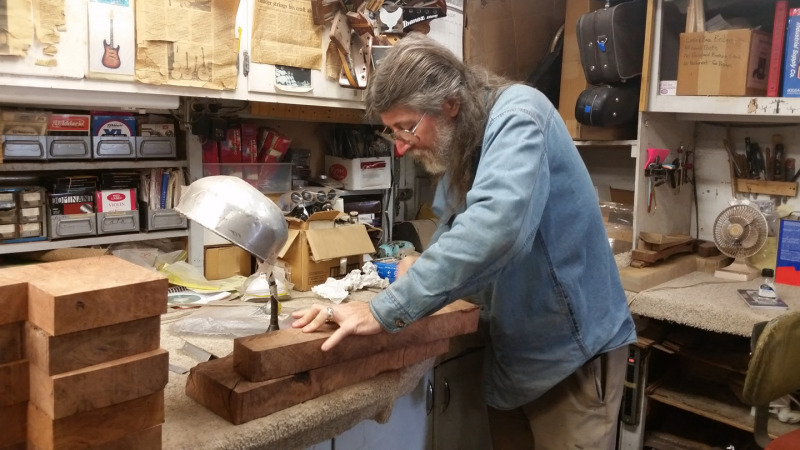More space inside the chamber means longer sound waves can resonate, and lower notes are produced. Smaller bodies and thinner strings make higher notes.
Jordan says that with electric solid body instruments, “we're not relying on a vibrating box of wood to produce the sound. We can reproduce that in an amplifier and just convert the vibrating string energy into electricity and let the amplifier do the conversion.”
This allows him to create tiny instruments with huge ranges. He has built nine-stringed violins that play higher than a piano and as low as a string bass. For that violin’s highest string, Jordan had to use a wire developed for NASA.
“It's the highest tensile-strength steel there is," Jordan explains. "And it'll go a fourth higher than a violin. And then you've got to figure out who really needs that. And the answer is, there are some people who do."
Jordan says if you wanted to play violin with any of the touring companies of Cirque du Soleil, "just to audition for it you have to be proficient on a seven-string violin."
And there are composers now writing pieces specifically for seven-string violin. Some have premiered on Jordan’s instruments.
“We're dealing with modern music, modern composers, writing for new technology, instruments that didn't exist 100 years ago. Or even 50 years ago.”
Jordan began his career as an assistant to Ervin Somogyi, a guitar maker in Berkeley. He had damaged his sister’s guitar and couldn’t afford the repairs. So he cut a deal with Somogyi.
"I made a bold teenage offer and said, 'Tell you what, I'll pay you half and I'll clean up your shop until you tell me we're even,' " Jordan recalls. "So that's how I ended up apprenticing with him. My career found me. I just didn't get in the way of it."
Since Jordan does virtually all of the construction himself, each instrument is unique and customizable. Most are pretty close analogues to conventional violins. But every once in a while, Jordan is asked to build a double-necked violin, a six-string upright bass or some other outlandish creation.
Jordan says a highlight of his career was building a double-necked violin for Neyveli Radhakrishna. "Radha," as he's known, was touring with Ravi Shankar at the time. Jordan recalls meeting Shankar.
"And he goes, 'You made Radha's violin?' and he was looking at me like I was some big deal. I mean, I just make sawdust in my garage. You know, for a guy who's seen that much to still have a sense of wonder about seeing something new, that's really cool," Jordan recalls.
And he plans to keep the innovations coming. He’s hoping to finish a new bass for himself soon, but the long waiting list for a Jordan violin keeps his pet projects on the back burner most of the time.
He hopes to build a 10-string violin in the next few years.
"I'm in contact with bioengineers that are working on a monofilament based on black widow spider web material, which happens to be stronger than steel per unit of diameter,” he says.

